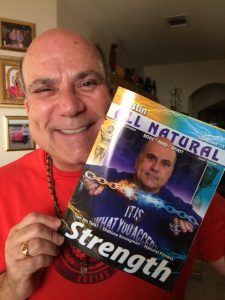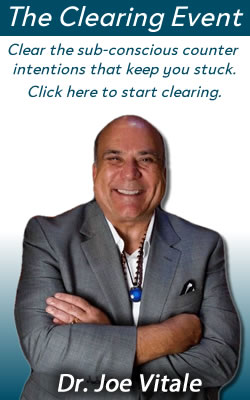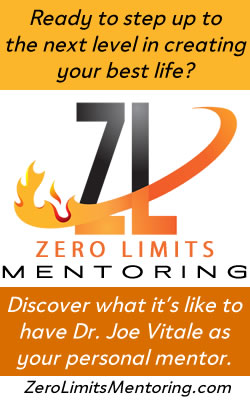Tag: strongman training
Find a Calf, Lift It
The following is the cover story feature article in this month’s issue of Austin All Natural magazine, by yours truly:
“Let me make you a paper weight.”
It was Dennis Rogers speaking. Many consider him the world’s strongest man. Celebrities call on him for advice on performing and getting strong. He’s performed over 2,600 feats of strength shows. He’s a legend.
We met over lunch. He wanted to give me a gift, or rather make one for me.
He wrapped his hands in a thin leather protective covering, and then began to bend a wrench before my eyes. I couldn’t comprehend how he did it. I had felt the wrench beforehand and it was a genuine metal tool, heavy and solid. But it bent like it was warm butter.
By now the kitchen staff had seen the bent wrench and saw the small lunch crowd forming around Dennis and me.
“Would you like me to roll a frying pan for you?” Dennis asked the cook and staff. “It can be a souvenir you can hang in the kitchen.”
They all agreed, their eyes bugged out and waiting.
Dennis pulled out a frying pan, put his fingers over the edge, and began to slowly roll it like it was a tortilla. It was astonishing to see. It was surreal. Dennis was clearly focused, breathing hard, putting his life force into his efforts.
He handed the completely rolled up pan, now of no practical use, to the chef.
None of us could believe it.
I had seen strongmen and feats of strength before. When I was in Russia, a man billed as the world’s strongest man – I guess there can be more than one – bent a heavy nail before my eyes. He, like Dennis, used sheer power and intense focus to get it done.
I admired it. I could see applications in other areas of life. I wanted to know more.
The origin of strongman feats of strength goes back to prehistory, maybe even back to caveman picking up boulders and protecting their caves.
The first of the recorded characters was probably Milo of Croton, an ancient Greek wrestler, circa 558 B.C.
His training was simple: find a young calf, lift it.
Next day, find a heavier calf, lift it.
Next day, find a heavier calf or cow, lift it.
It was an early exercise routine today named progressive overload. But that’s the ancient Greeks for you. They didn’t name it. They just knew the process made them stronger.
But feats of strength were performed throughout history, right into the circus and on the vaudeville stage throughout the 1800s.
As time went on, strength displays were broken into categories, such as power lifting and bodybuilding.
I admire men and women who use intention and strength to accomplish something the rest of us might consider virtually impossible.
- Julie Havelka, a competitive female strength athlete, wrote Personal Best: How to Train for the Sport of Strongman. She reveals the intensity of mind and muscle needed to accomplish these feats. Lifting huge stones, tractor tires, or small horses isn’t uncommon.
- Eugen Sandow (1867-1925), considered the father of modern bodybuilding, began his career as a sideshow strongman. The list of colorful characters goes on, and is alive today in people like Dennis Rogers.
- Joe Holtum, in the 1800s, would catch a cannon ball in his bare hands. He lost a finger or two along the way, but always drew a crowd.
- And I once saw a clipping about Joe Vitale – yes, the same name as mine – a circus performer in New York City in the 1900s who lifted over 500 pounds – with his teeth.
Some of these early strongmen, most notably Joseph Greenstein, whose stage name was the Mighty Atom, also pursued strength as a means of mental and spiritual development.
Authentic strongman and strongwomen don’t use magic tricks to get their results. They want to impress themselves as well as you.
This is one reason I’m attending Dennis Rogers and Dave Whitley’s Oldetime Strongman University Training in Austin September 19-20. http://www.dennisrogers.net/oldetime-strongman-university-seminar/
I want to learn what it takes to be a modern walking Hercules, able to bend nails, wrenches, frying pans or your car keys, but doing it as a type of meditation. Using it to stretch myself into bigger possibility thinking.
Dennis told me, “The area of strength that David Whitley and I will be teaching is the artistic display of physical strength. I say this because you must certainly build your body, particularly your core and grip, but it also requires a creative mind and artful presentation.
“It is the art of the old vaudeville and Coney Island strength stars. Men like Eugen Sandow, Siegmund Brietbart, Warren Lincoln Travis, and ‘The Mighty Atom.’ “
According to author and strength historian David Willoughby, “It was Sandow who raised feats of strength out of the grunt-and groan category and made them spectacular and entertaining.”
But it’s not about the bent item, it’s about learning to use your mind and muscle to get results. That’s priceless anywhere.
David Whitley said, “It is the bodily expression of the mind’s power.”
And that’s why I trained with the “old school” bodybuilders, like multiple Olympia winner Frank Zane, who advised me, “Watch your thoughts. Most people let their mind talk themselves out of what their muscle can do. Push past the voice.”
And Steve Reeves, the legendary early bodybuilder who played Hercules in the original movie, said he would visualize his muscles growing as he worked them. Arnold does the same thing.
It’s mind over muscle.
Dennis Rogers once told me that most people give up in trying to bend a wrench right before the wrench is going to bend. “They let their minds talk themselves out of what they can achieve,” he explained.
David Whitley said, “We tend to think of the physical first, but being strong is something that goes beyond the physical performance of feats and encompasses the entire being. It is a means of discovering, unifying and expressing the True Self.
“The essence of being an old-time strong man in my opinion is recognizing and acknowledging the infinite potential of the human mind. The ability to bend steel, rip decks of cards, etc., has its roots in the same place as every great invention or work of art we have ever seen: The Imagination.”
You can see how relevant this is to all aspects of life, not just in the gym or on stage. It’s about using your mind and body to achieve your intentions. It’s about training in a way to exceed your own “personal best” and proving to yourself and others that virtually nothing is impossible.
Now, stand back, as I’m going to break that chain around my neck on the cover of the magazine…
Ao Akua
Joe
PS – If you are in the Austin, Texas area, you can find the current issue of Austin All Natural at places like Central Market, Whole Foods, and leading edge book stores and yoga studios. You can read it online right here.




